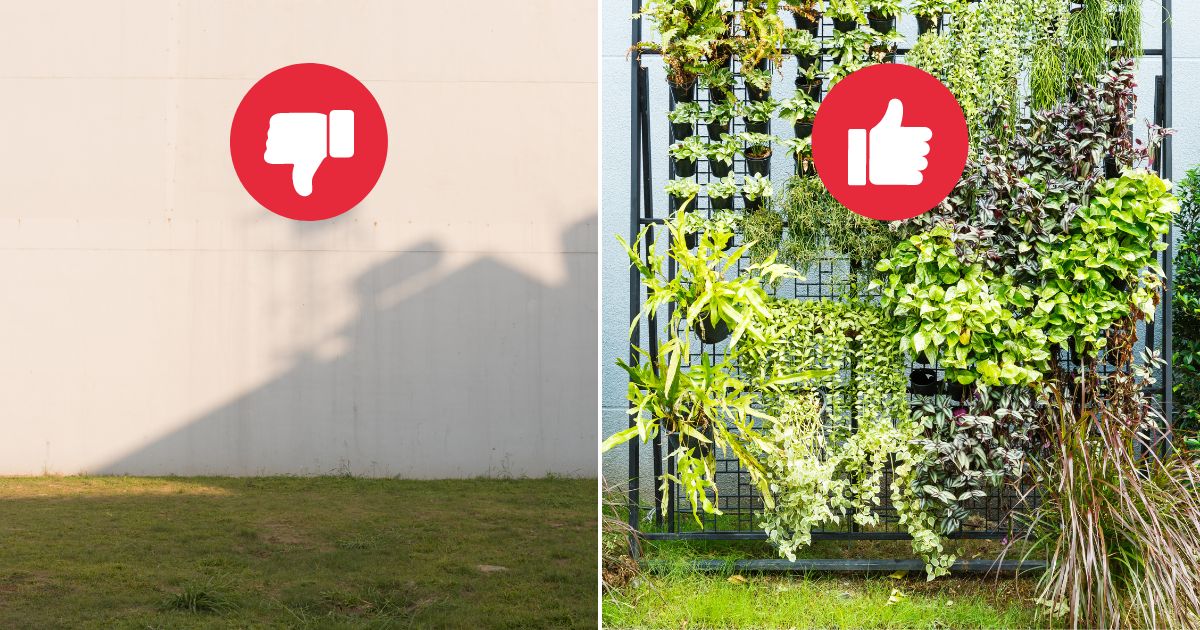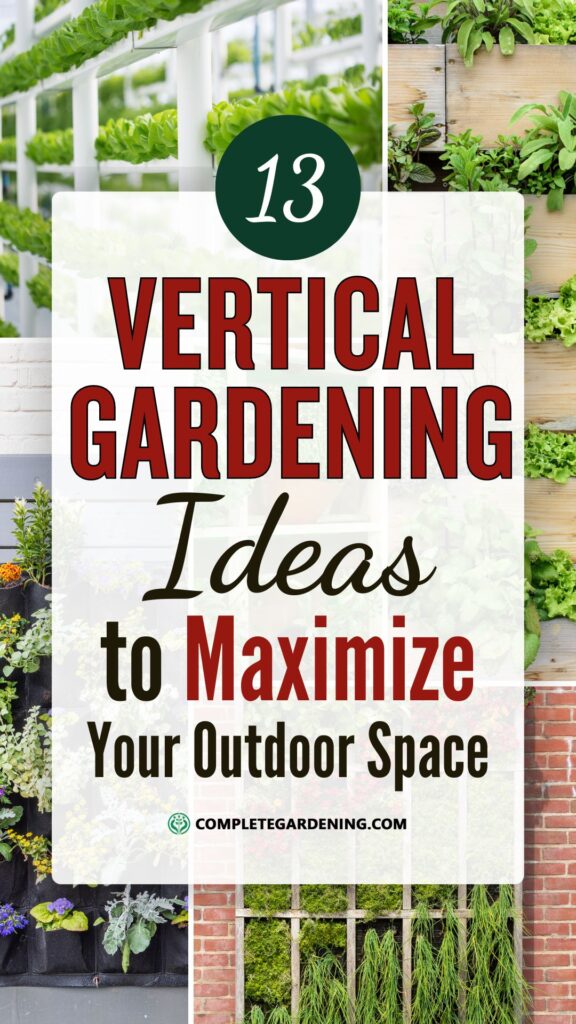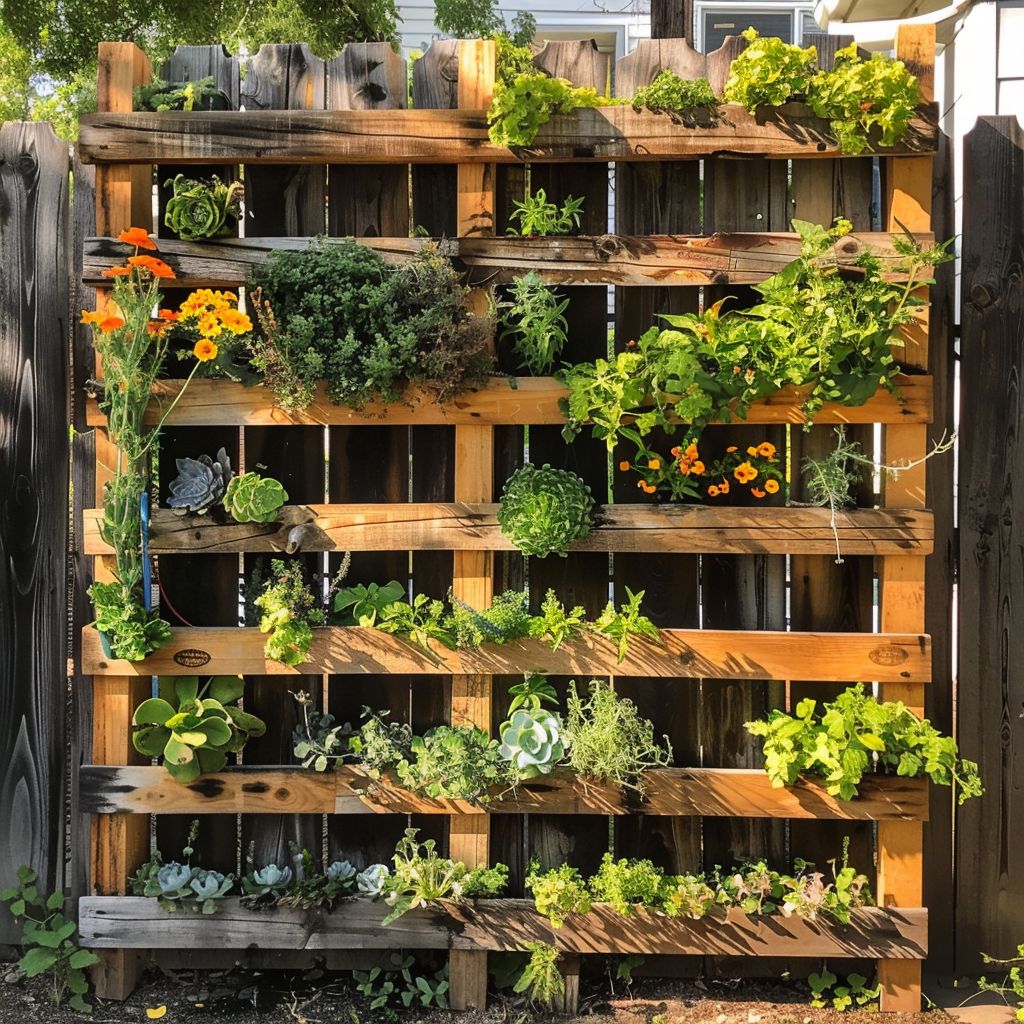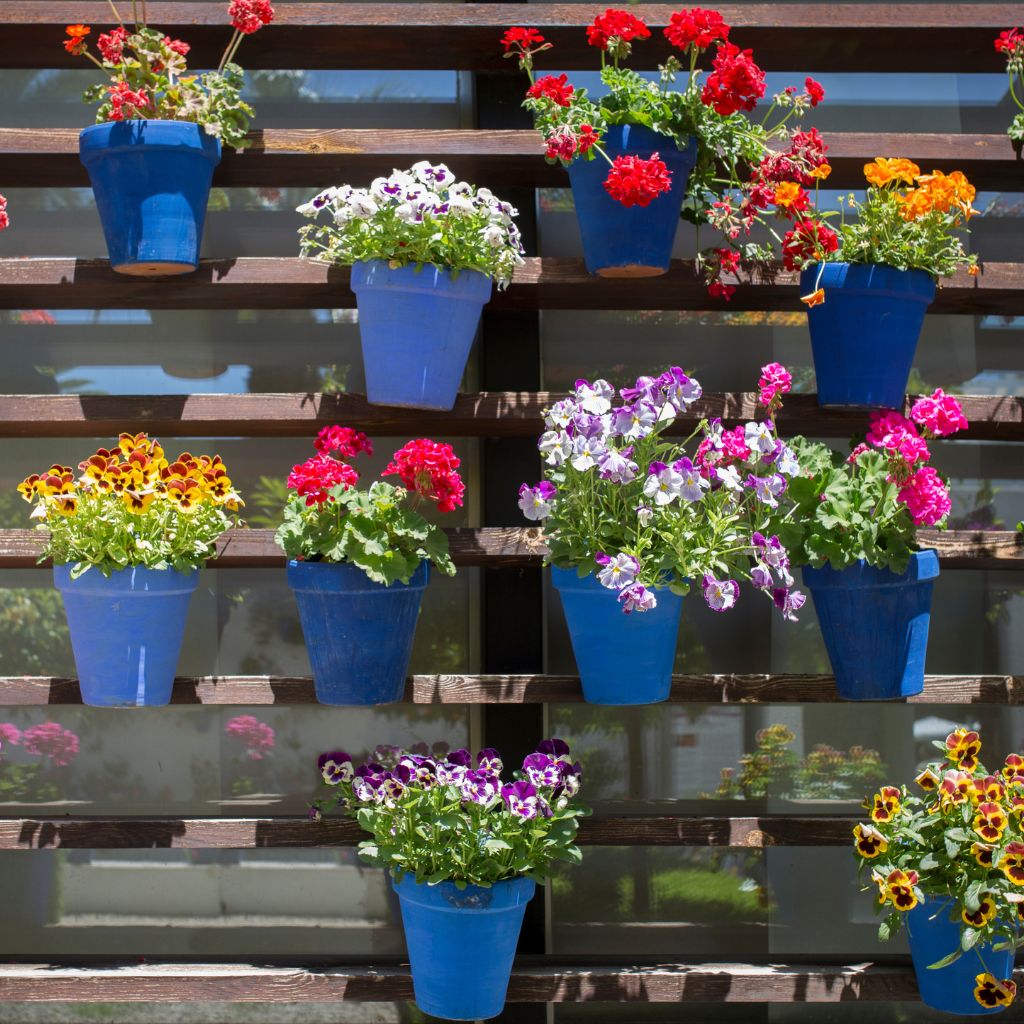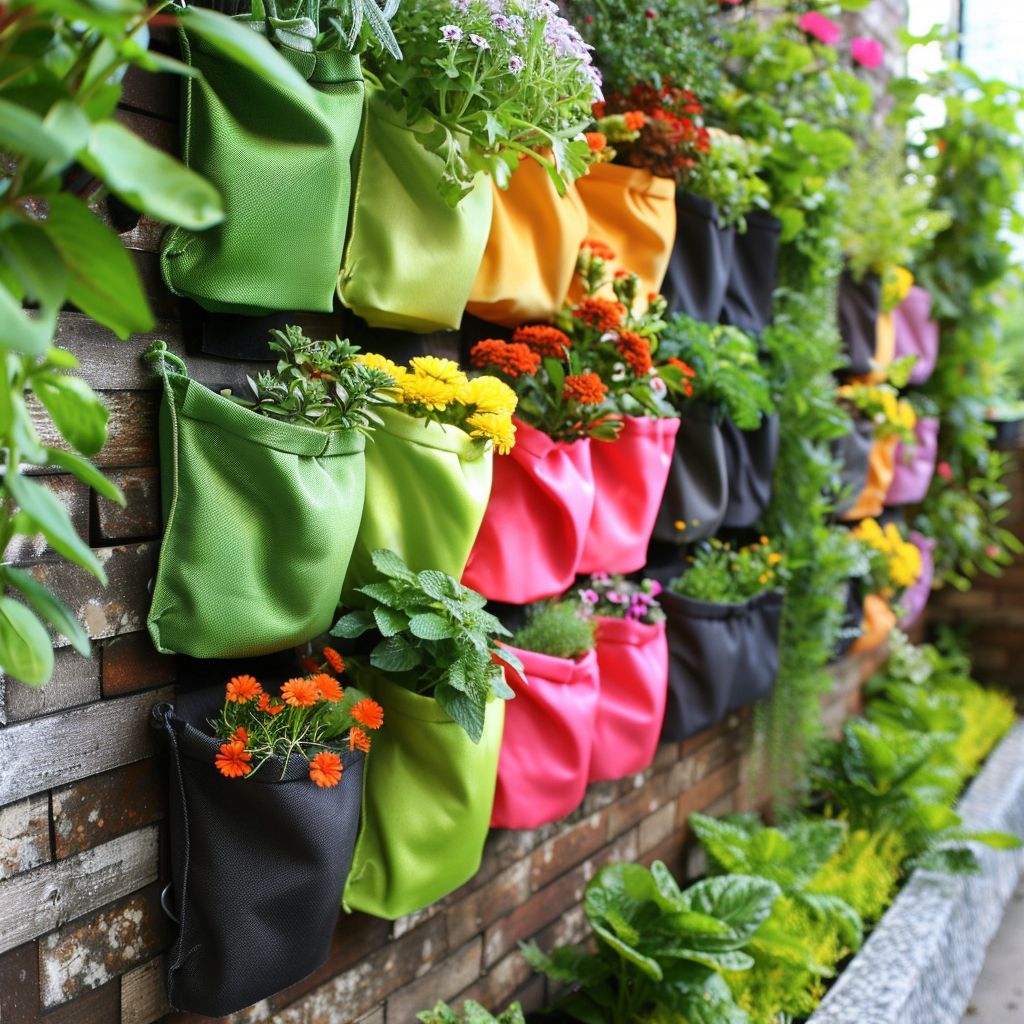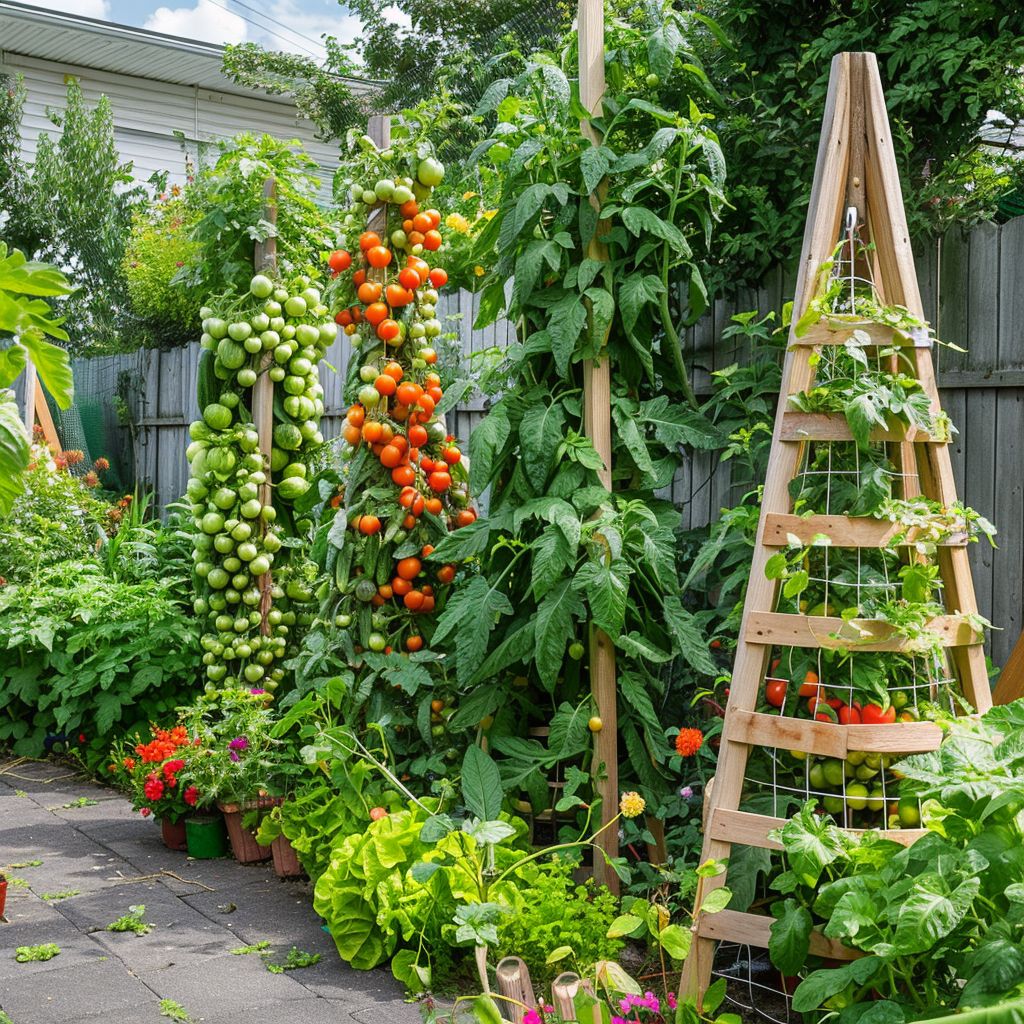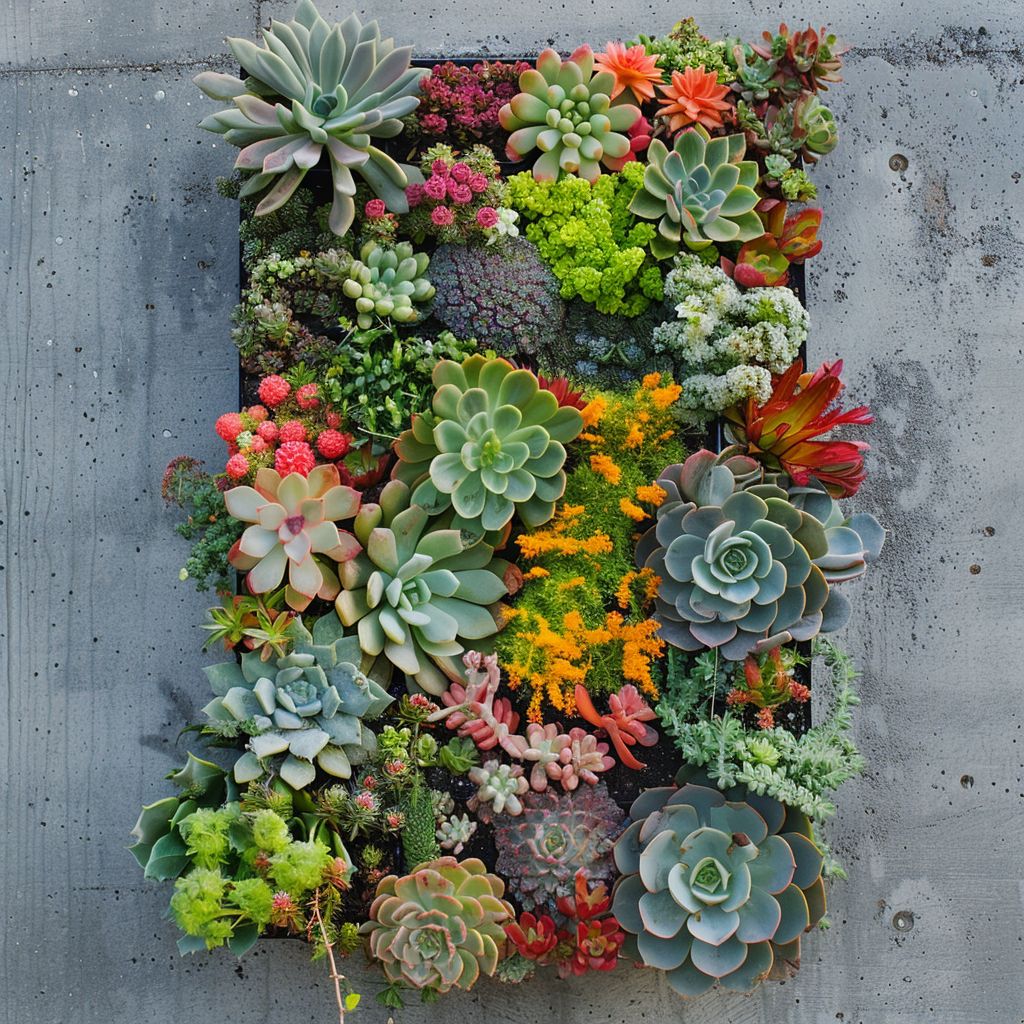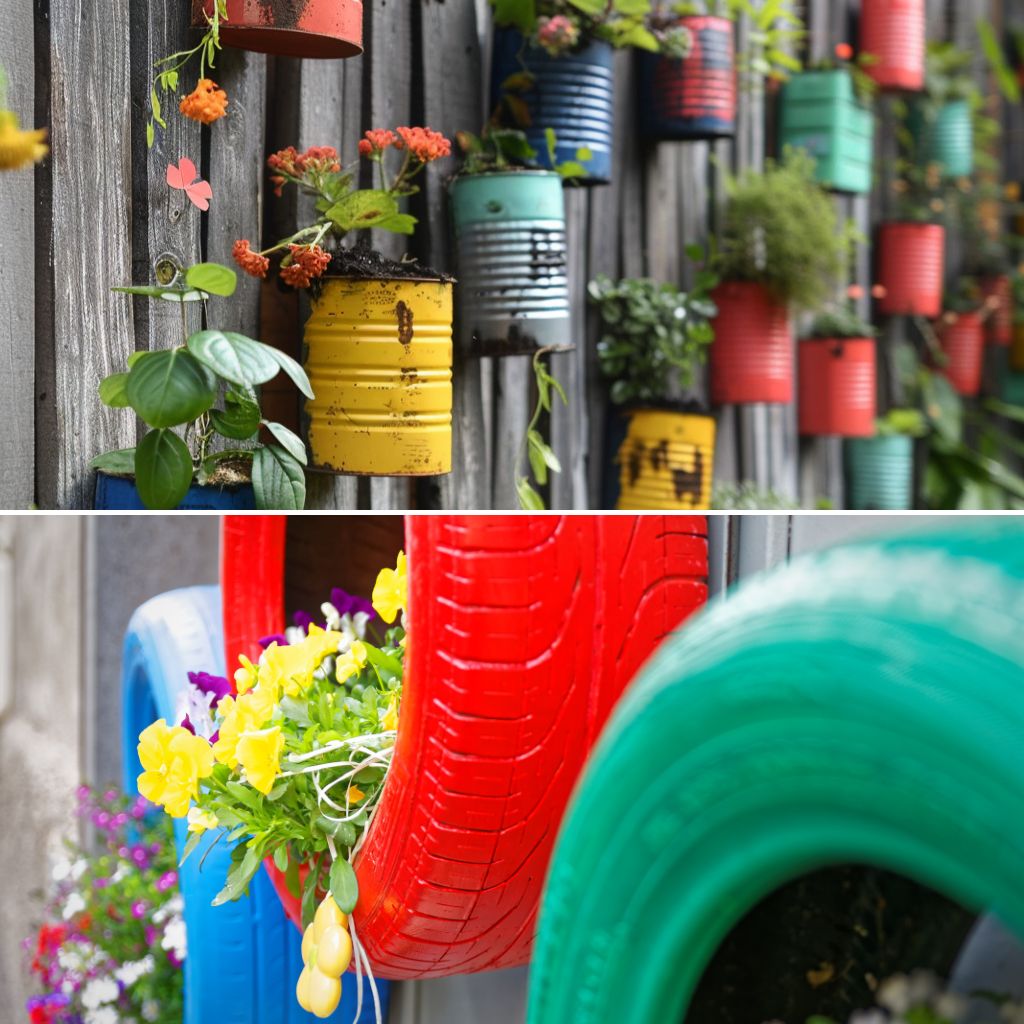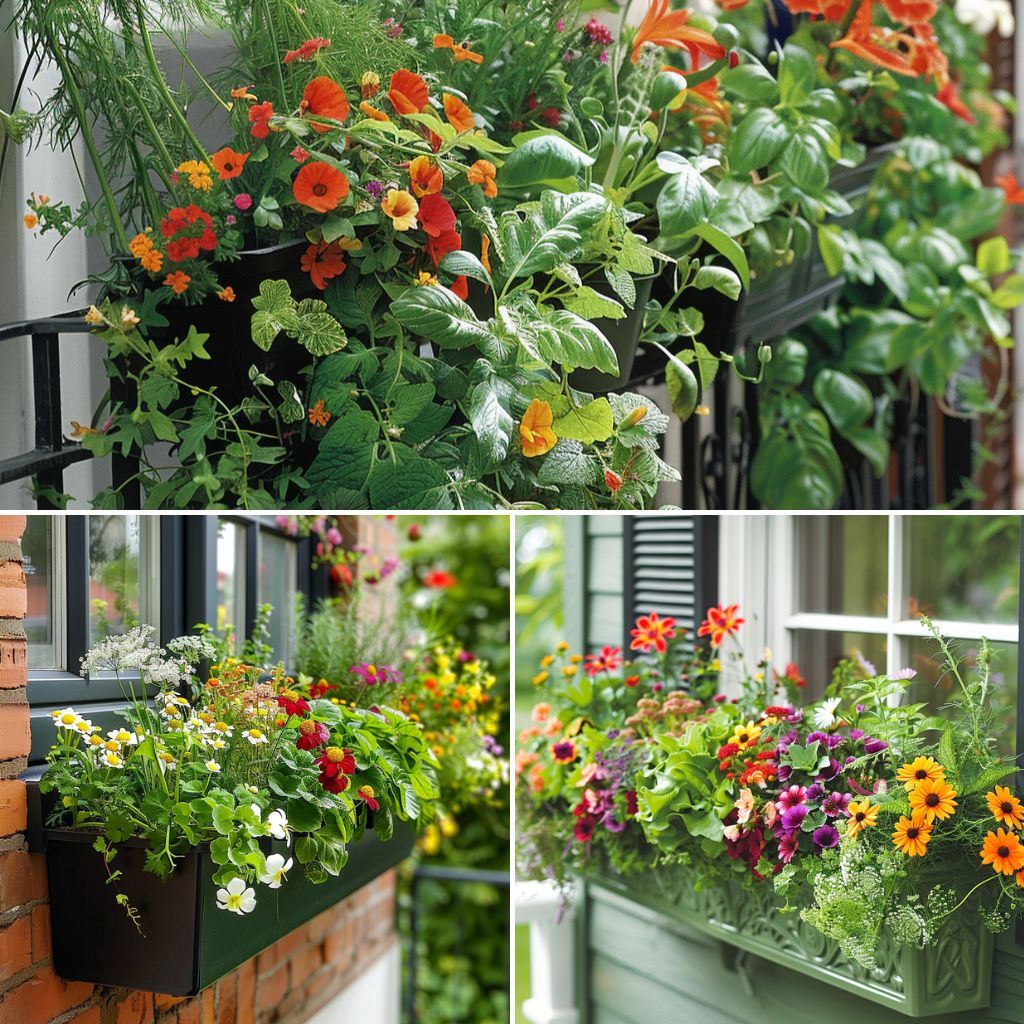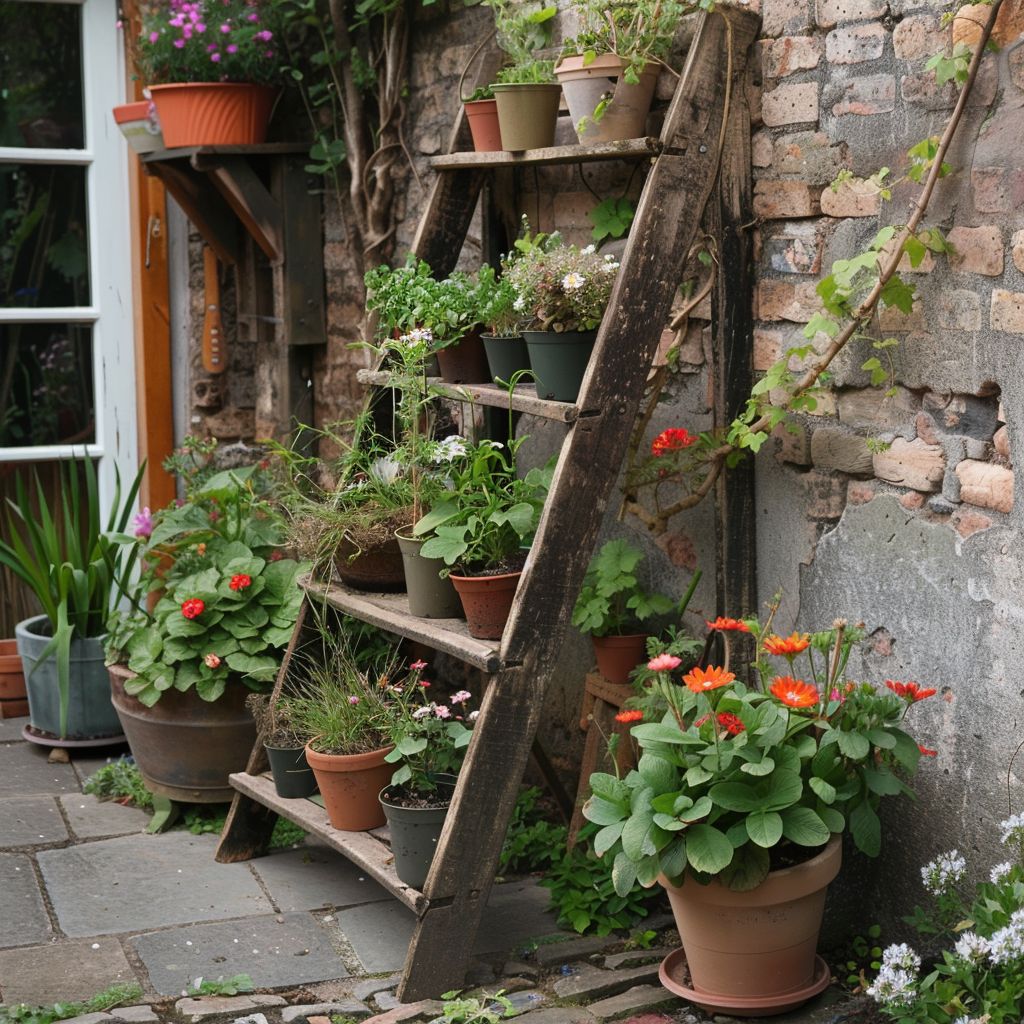Vertical gardening is a brilliant way to make the most of limited outdoor space. By growing plants upwards, you can create lush, green walls and striking displays, even in the smallest of gardens.
Here are 13 vertical gardening ideas that will transform your outdoor area into a verdant oasis.
1. Green Walls
Green walls, or living walls, are one of the most popular vertical gardening trends. They involve growing plants on a wall or freestanding structure, often with the help of a modular system. These systems typically include built-in irrigation, making maintenance easier.
You can fill a green wall with various plants, from ornamental flowers to edible herbs, creating a living tapestry that brings life to any outdoor space.
2. Pallet Planters
Repurposing wooden pallets into vertical planters is a cost-effective and eco-friendly gardening solution.
Simply attach the pallets to a wall or lean them against a fence, then fill them with soil and plants. Herbs, succulents, and small flowers thrive in these setups. Ensure proper drainage by adding holes at the bottom of each section.
3. Trellis Gardens
Trellises are perfect for climbing plants like beans, peas, and flowering vines. Install a trellis against a wall or as a standalone structure.
The lattice framework provides excellent support for plants to climb, creating a beautiful vertical garden that adds height and depth to your space.
Trellises can be made from wood, metal, or sturdy plastic, depending on your aesthetic preference and budget.
4. Hanging Planters
Hanging planters offer a versatile and stylish way to grow plants vertically. You can hang pots from walls, fences, or even ceilings.
Use a mix of trailing plants like ivy, petunias, and ferns to create a cascading effect. Hanging planters are also great for growing herbs close to the kitchen for easy access while cooking.
5. Pocket Planters
Fabric pocket planters are an excellent option for small spaces. These planters consist of several pockets where you can plant herbs, flowers, or small vegetables.
Attach them to walls or fences to create a vibrant, green display. They are especially useful for urban gardens, balconies, or patios where ground space is limited.
6. Vertical Vegetable Gardens
Growing vegetables vertically maximizes yield in limited space. Use structures like obelisks, cages, or tiered planters to train climbing vegetables such as tomatoes, cucumbers, and pole beans.
Vertical vegetable gardens not only save space but also make harvesting easier and reduce the risk of pests and diseases by improving air circulation.
7. Succulent Walls
Succulent walls are a low-maintenance vertical gardening option that adds texture and interest to your outdoor space. These drought-tolerant plants thrive in shallow soil and require minimal watering.
Use a vertical frame with pockets or small planters to create a living wall of succulents. Their varied shapes and colors make for a striking display.
8. Upcycled Planters
Get creative with upcycling by turning everyday items into vertical planters. Old tin cans, plastic bottles, and even shoe organizers can be repurposed into planters.
Mount them on walls or fences and fill them with soil and plants. This approach is not only budget-friendly but also adds a unique, personalized touch to your garden.
9. Tiered Plant Stands
Tiered plant stands allow you to display multiple layers of plants in a compact area. These stands can be placed against a wall or used as a freestanding feature.
They are ideal for displaying flowers, herbs, and small vegetables. Opt for stands made from durable materials like wood or metal to withstand outdoor conditions.
10. Window Boxes
Window boxes are perfect for adding greenery to balconies, patios, and windowsills. Attach them securely to your window ledge or railing, and fill them with a mix of flowers, herbs, or small vegetables.
Window boxes not only save space but also bring plants up to eye level, making them more enjoyable to look at and easier to care for.
11. Climbing Plants on Fences
Transform plain fences into lush green walls by planting climbing plants. Varieties like ivy, jasmine, and clematis are excellent choices for this purpose.
Use a trellis or mesh to help the plants climb and cover the fence. This method not only beautifies your space but also adds privacy and can help cool your outdoor area.
12. Ladder Planters
Ladder planters are a charming and functional way to grow plants vertically. Simply lean an old ladder against a wall and place pots on each rung.
This setup works well for displaying flowers, herbs, and small vegetables. You can paint the ladder to match your garden decor or leave it rustic for a vintage look.
13. Hydroponic Towers
For a high-tech approach to vertical gardening, consider hydroponic towers. These systems use nutrient-rich water instead of soil to grow plants. They are perfect for growing herbs, leafy greens, and small vegetables.
Hydroponic towers can be purchased pre-made or DIYed using PVC pipes and a submersible pump. They offer efficient use of space and water, making them ideal for urban gardeners.
Tips for Success
To ensure your vertical garden thrives, follow these tips:
Choose the Right Plants: Select plants that suit your climate and the amount of sunlight your garden receives. Consider using a mix of ornamental and edible plants for a diverse and functional garden.
Ensure Proper Watering: Vertical gardens can dry out faster than traditional gardens. Use a drip irrigation system or self-watering planters to maintain consistent moisture levels.
Use Quality Soil: High-quality, well-draining soil is essential for healthy plants. Consider adding compost or other organic matter to improve soil fertility.
Regular Maintenance: Prune plants regularly to encourage healthy growth and prevent overcrowding. Check for pests and diseases, and take action promptly to address any issues.
Secure Structures: Ensure all planters, trellises, and supports are securely fastened to prevent accidents and provide stability for your plants.
By incorporating these vertical gardening ideas, you can transform any small outdoor space into a lush, green haven. Whether you have a balcony, patio, or tiny backyard, vertical gardening allows you to maximize your planting area and create a beautiful, thriving garden.
